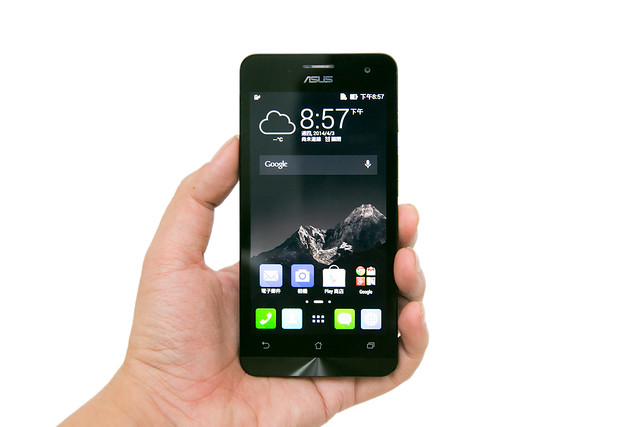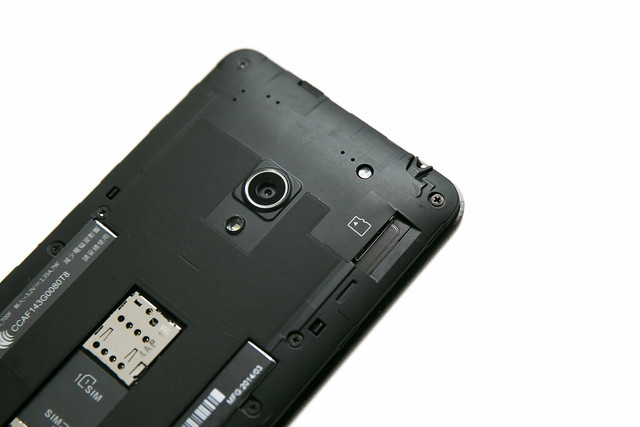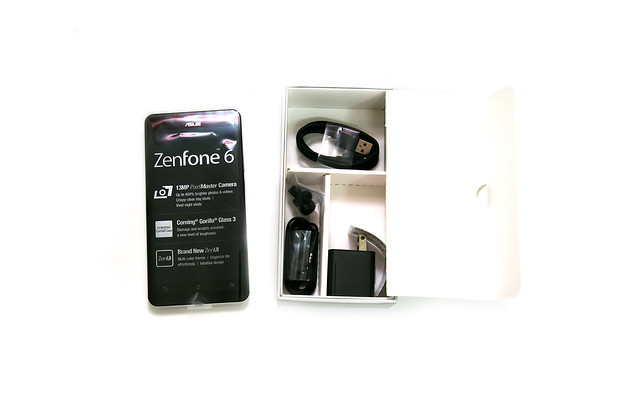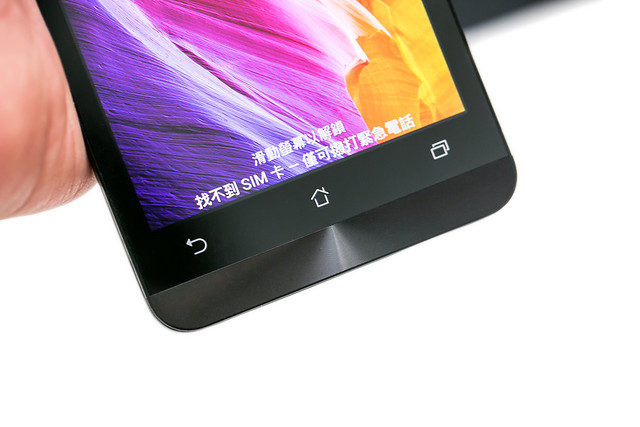ASUS ZenFone 5 / 6 Review (1) Unboxing – Getting Back to Basics
When you mention ASUS, what comes to mind? Taiwan’s leading motherboard manufacturer, top graphics cards for gamers, or a major notebook manufacturer? Aside from these familiar strengths, ASUS has been making major strides in the smartphone market. In recent years, the ASUS PadFone series that allows easy transition between phone and tablet as emerged as the most well-known ASUS product in the market. The combination of phone and tablet is a unique design innovation. However, at the 2014 Consumer Electronics Show (CES), ASUS unveiled a new series of phones, transferring the high-end notebook brand Zen to the new ZenFone. The new product line combines the ultimate simplicity of design with a new ZenUI interface, and is available in 4-inch, 5-inch, and 6-inch versions.
Compared to the mid-high price points of the past, the ZenFone series sells for between USD99-199. However, despite its attractive pricing, the ZenFone performed exceptionally in A-Hui Liao’s tests, both in terms of design and performance. On this occasion, A-hui got only of the ZenFone 5 and ZenFone 6 versions. In the next articles in the series, we will introduce these two machines.
Before unboxing the phones, we first compare the specifications of the ZenFone 4, 5, and 6. The main difference between the three models is the screen size. The Z4 can be regarded as an entry level phone in terms of specifications and price, while the Z5 and Z6 are quite similar, using high specifications but with a non-removable battery. All three models adopt the new generation ZenUI interface, incorporate a dual card dual standby design, and have space for a memory card to expand storage.
ZenFone 5 and 6 pre-registration and actual phones will be available at the launch on April 8, while the ZenFone 4 is expected to be unveiled in May.
Unboxing the ZenFone 5 (black model)
A-hui got hold of a black ZenFone 5 (or Z5 for short). The packaging also comes in a matching black design. The ZenFone series is available in black, white, and red. Unfortunately, we have not seen an actual red model, but we guess that it will also come in red packaging to match the color of the phone.
The packaging design is quite satisfactory, with a decent matching color design. The packaging design does not make the product look cheap, and is nothing like the recycled packaging design used by Xiaomi.

On the side of the package, a window shows the main specifications of the ZenFone, while the box is opened by sliding it out.

Similarly, the phone itself comes with a protective sheet containing some important information. On the Z5, this highlights the 8 million megapixel PixelMaster camera and the use of third-generation Corning Gorilla Glass (at this price point, the ZenFone’s use of Gorilla Glass 3 is most certainly appreciated), as well as the newly designed ZenUI. We got a good feeling from the ZenUI, and this feature will be explained in greater detail in a separate article to appear later.
The box contains the phone itself, basic instructions, a cable, a travel charger, and headphones. In terms of accessories, there is no difference between the Z5 and Z6.
The cable is printed with the ASUS logo, making is distinct from a standard cable. The quality is also good.

The charger has USB 5V, 1.35A specifications.
The supplied headphones have an in-ear design, and include an answer button and microphone.
Right, finally the boring part about accessories is over (relief). Let’s take our first look at the ZenFone 5!
At an attractive price, the ZenFone 5 offers a 5-inch 1,280 x 720 pixels resolution Super IPS panel, with a maximum backlight brightness of 400nits. It goes without saying that the screen is beautiful, while the surface also features a Corning Gorilla Glass 3 anti-scratch resistant glass, showing that ASUS are really going out of their way. The ZenFone 5 also features a screen that is comfortable to look at. Some people want to compare ZenFone 5 to the Hongmi. It is not even a contest. Just looking at the screen they are leagues apart. Of course, PPI screens cannot match high-resolution FullHD screens. However, the PPI screen features 294ppi, making it very close to a retina screen. At the same time, the screen is in no way inferior to current flagship models in terms of both color and brightness. As a result, we were delighted with the screen!
The ASUS ZenFone 5 has a body size of 148.2 x 72.8 x 10.3mm, and weighs about 145g. It shouldn’t be much of a problem for men to use it with one hand. At the top right of the screen there is a 2.0 megapixel front camera, along with an earpiece and proximity sensor.

The back and the edges of the phone are made from polycarbonate, with both the black and white models featuring a matte design. Whether it is the actual feel in your hands or the anti-slip grip, performance is excellent. However, in terms of performance, the back is relatively low-key. If the Zen series hairline spun metal finish with concentric circles was added, the result would be even better (if new ASUS phones include this design, remember to thank A-hui for suggesting it!)
The Zen brand name on the front comes from the ZenBook notebook series. Therefore, design elements of the ZenBook featured in the ZenFone series include concentric circles, metal body, and hairline spun metal finish with concentric circles.
Look at the hairline spun metal finish with concentric circles below, is that not the Zen style?! Although, the phone-to-screen size ratio is not high, and by today’s standards, the ZenFone it is not considered a thin frame design. Despite this, the screen fits well with the black frame of the phone. A minor shortcoming is that the three touch buttons do not have a backlit design, making them less easily to use at night. The choice to leave this feature out was probably due to cost considerations.
For the rear main camera, ZenFone uses a F2.0 aperture 800 million pixel camera (Sony BSI CMOS image sensor). PixelMaster technology provides higher light collection (400%), allowing shooting in low light conditions.
What about the Intel Inside logo on the back? In fact, ASUS and Intel have long had a close partnership. Aside from desktop and mobile computer processors, in recent years Intel has been actively developing its ATOM processor for mobile application platforms. In fact, the ASUS FonePad series and Samsung tablets have also been equipped with Intel processors. However, the ZenFone is one of the few smartphones in the world, and the first from Taiwan to use the Intel Atom processor. The ZenFone 6 and ZenFone 5 use the same Intel Atom Z2580 2GHz dual-core processor. Furthermore, HT technology allows quad-core operation. How does it perform? The performance is very good, a very satisfactory performance. The phone operates very smoothly and there are no compatibility problems.
One more thing ~ the speaker is at the bottom of the phone ~
The build is very simple, the power button and volume keys are placed on the right side, while the surface of the buttons use a concentric circles finish. The buttons have good feedback and feel good in the hand.
The power button and volume control are placed on the side of the phone, and have the same attractive hairline spun metal finish with concentric circles.
At the top of the ZenFone 5 is a 3.5mm headphone jack and noise-canceling microphone.
At the bottom is a standard MicroUSB port for charging and data transfer.
The ZenFone 5 has a built-in non-replaceable 2,110 mAh lithium battery. The back cover can be opened, but you cannot replace the battery. Opening the back cover allows you to replace the SIM card and MicroSD memory card

Businesspeople will love the WCDMA / GSM dual card dual standby. Both slots take micro-SIM cards, and there is no separate primary and secondary slot. You can choose one SIM card for data connection, while both cards are simultaneously on standby. When in talk mode, you select one SIM card, while the other SIM card switches to busy mode.
The MicroSD slot allows up to 64GB of expandable storage. In addition, the ZenFone series did not support USB OTG in testing, making memory card expansion even more important. In addition, tests show that it is no problem to remove the cable when connected.
Unboxing the ZenFone 6 (white version)
Next, let’s take a look at the ZenFone 6 (which we can call the Z6 if we are feeling lazy). Unlike the Z5, A-hui got hold of the white version of the Z6. Unfortunately, we haven’t had a chance to get hold of the red version, but we’ve heard it also looks fantastic. If you get a chance, I suggest everyone goes to an ASUS event to experience it for yourselves. ZenFone 6 is the older brother of the ZenFone series (at least the screen is the biggest). Specifications are also generally the same as the ZenFone 5 or slightly higher.
As this was the white version, it also came in a white box.

As with the Z5, the main specifications are shown on the side, while the box is opened by sliding it out.
The Intel Inside sticker is found on the side. For hardcore gamers like A-hui, the presence of the world’s “biggest seller of stickers” in Intel should be welcomed!
We discussed the accessories before, so we won’t go over them again.
The screen also has a HD 1280 resolution. However, unfortunately, when compared to the five-inch Z5, this makes the level of detail on the larger Z6 somewhat lower. However, the benefit of the big screen is that it is comfortable to look at and easier to type on.
The touch buttons are also designed with a metal hairline finish, which is the central design element of the ZenFone. In fact, if you look closely, the gloss appears different at different angles or in different light.
Let’s compare the ZenFone 6 to the ZenFone 5.

Of course, it feels bigger in our hands.
The back of the white version has the same matte surface.
When compared to the ZenFone 5, the ZenFone 6 camera has more pixels, coming with a 13 million pixel main camera (with the same PixelMaster technology), providing higher resolution shots.
Although the ZenFone 6 is a large phone, it is relatively thin, and the phone itself weighs less than 200g, making it relatively lightweight for a 6-inch phone.
However, as the body of the 6-inch phone is longer, the positions of the power and volume control buttons are swapped, producing a more ergonomic feel.
If you look closely, the buttons have the same hairline spun metal finish.

The phone comes with a non-replaceable 3,230 mAh lithium battery. The larger capacity battery can cope with the larger screen and provide a longer battery life. In addition, the phone offers space for two SIM cards and a memory card expansion slot.
Now, we look at some of the specifications and performance tests for the ZenFone 5 and ZenFone 6.
Storage Space.
Z5 and Z6 are both 8GB models. After system storage, you are left with 4.99 GB. Fortunately, unlike the Hongmi, there is no separate space for installing apps, which means the entire 4.99GB can be used for apps. Of course, this is not much space. However, photos, videos, and other data files can be moved to the MicroSD card.
RAM
After the Z5 is loaded, about 362MB of the 1GB memory is available, demonstrating that the ZenUI does not eat memory. The phone’s memory management is good, meaning that generally speaking users should not find their phone operating slowly or running out of memory. However, the Z6 offers even more with 2GB of memory, meaning that users should have at least 1GB of spare memory to play with.
AnTuTu X Test
The Intel processor is actually very efficient, and score over 22,000 on AnTuTu, which is very close to the 26,000 score achieved by the Qualcomm S600 quad-core or MTK6592 octa-core processors. At the ZenFone’s low price point, A-hui reckons this is a very good result. When trying it out on some bigger games, we didn’t encounter any many problems.
3DMark Test
Actually, on the 3DMark and AnTuTu tests, strangely even though the ZenFone 5 has a smaller memory than the ZenFone 6, it showed a slightly better performance.
In conclusion, while the Z5 8 million pixel camera produces richer color and slightly higher contrast, the Z6 13 million pixel camera produces higher detail. At average shooting speed, shutter lag is not obvious (a problem that often occurs in low cost cameras). However, in low light situations, shutter speed will be lower. Remember to keep your phone as still as possible.
In the lock screen settings, there is an option to add camera quick launch, which we strongly recommend. After turning on this feature, when the phone is in standby mode, a quick double-click of the volume buttons enables you to quickly access your camera. This feature is very intuitive, and we strongly recommend you keep it switched on.
Quickly double-clicking of the volume buttons enables you to quickly access your camera.
Variety of Shooting Modes
Honestly, A-hui has never seen such a comprehensive camera mode in mid-range phones. Many features found in high-end flagship machines have been incorporated in the ZenFone, including a number of practical shooting functions (there are fewer shooting modes available for the front camera).
Miniature mode effect
You can also continue to take pictures when in video mode
High-dynamic-range (HDR) on and off
Panorama shooting mode
Clear retouch mode. The camera will take five shots, so keep the camera as still as possible.
ZenFone 6 Actual Shooting
In the case of low light (even when the naked eye sees something close to the image on the left), the PixelMaster low-light mode can be used. When this mode is activated, the number of pixels drops to 3 million. However, in return, the shutter does not need to stay open too long by producing a 400% increase in light sensitivity. The result is fantastic.
The two photographs below show the effects of the low light mode.
The result is also not too grainy, producing a very satisfactory outcome.
ZenFone 5 Actual Shooting
Although the ZenFone 5 also features the PixelMaster low-light mode, when this mode is activated, the number of pixels is even low, at only 2 million, meaning an even greater loss of detail. However, the rule is always the same; the most important thing is to get the shot, if you miss the shot then everything else is irrelevant.
We have talked a lot about the ZenFone already, however, there is still one important point to discuss – the new generation ZenUI interface. ZenUI can be regarded as an enhanced version of the Android system, similar to HTC’s Sense and Xiaomi’s MIUI. These software suites provide an enhanced interface and tools based on user experiences. The ZenFone is the first line of phones to incorporate the new ZenUI interface, and it is anticipated that in the future new ASUS phones will also incorporate ZenUI.
Let A-hui show you some of the particularly appealing and convenient aspects of the ZenUI.
Simple and Elegant Design
ZenUI users a fashionable flat user interface design. Using a currently popular expression, the ZenUI provides a “fresh interface.” Speaking a little more technically, the ZenUI can be described as the native Android UI following optimization. It uses the same operating logic, but is also more friendly and visually attractive.
The built-in weather APP has an excellent feel.
What’s Next
The main function of What’s Next is to deliver “notifications of what’s next to do.” Users simply have to use a Google or Exchange account, and the system will automatically extract the information from the calendar and display a notification not just on the home screen, but also on the lock screen, allowing users to keep abreast of their schedule.
What’s Next also provides a to-do list, and can be synchronized with Google. The simple and easy to use interface is also a key feature of the ZenUI. Events such as missed calls and message replies can be selected to easily move them to the to-do list, facilitating a convenient centralized view and management.
Reading Mode
The reading mode from the PadFone has also been adopted for the ZenFone. When using the reading mode, the screen turns to a yellow hue, making reading webpages or e-books a more comfortable experience.
Easy to Use Chinese Input
It should be stressed that since ASUS is a Taiwanese company, the Chinese input is exceptional, offering many features and strong functionality. A-hui also enjoyed the ZenFone’s built-in Zhuyin input method, which feels very close to Chaozhuyin, making it extremely easy to use.
Easy to Use Telephone
Unusually, phone dialing also supports Zhuyin, and is also a special functionality for Taiwan. In addition, another useful feature is that you can easily switch to handwriting mode.
App Lock
If you are worried about other people accessing your apps, or you want to stop family members from using certain apps (for example to stop them changing your settings or making purchases), the ZenUI includes an app lock function, allowing you to protect apps with a password.
Locked apps will show a lock screen, which asks for a password to open the app.
SuperNote
SuperNote is a note taking app developed by ASUS. The app is outstanding, and allows you to create notes in a variety of ways, including handwritten notes, typed notes, and importing multimedia content.
SuperNote offers many different stroke types, including pen and pencil, and also allows adjustment of color and thickness. You can great results by using your fingers or a simple stylus.
If you don’t have a stylus, it doesn’t matter. SuperNote also allows you to shrink large characters. If you look at the picture below, you can see that even A-hui’s thick fingers can easily take notes.
ASUS Personalized Settings
In ASUS personalized settings, you can set features such as a multi-function button (A-hui often has to prepare teaching materials, so of course he set this to screen capture), notification toggle, and glove mode. You can also choose whether you prefer apps to be installed to the internal storage or an internal memory card, a function that is not currently widely available on Android phones.
Power-saving Mode
The power-saving feature includes three modes. Users can customize screen brightness for different functions or adjust app connectivity based on their own needs.



































